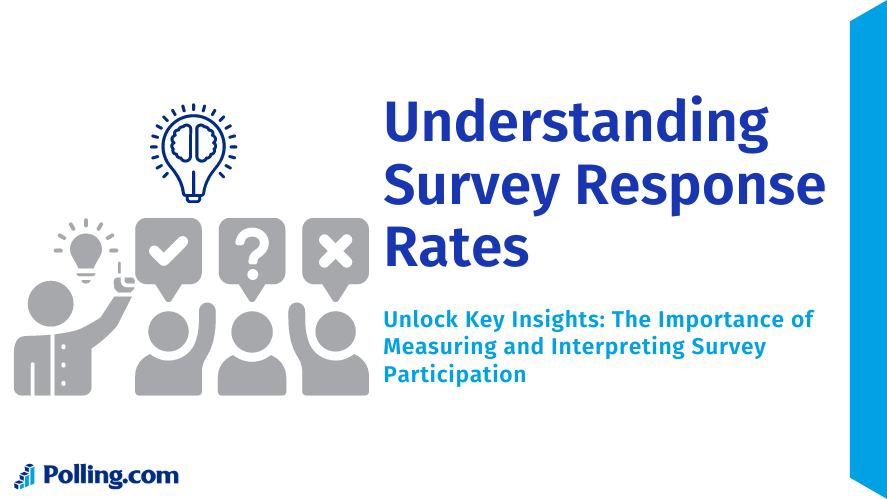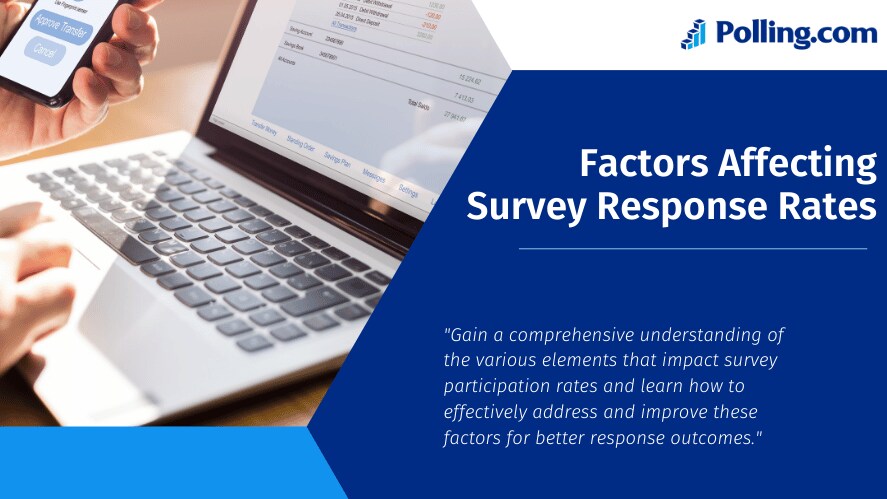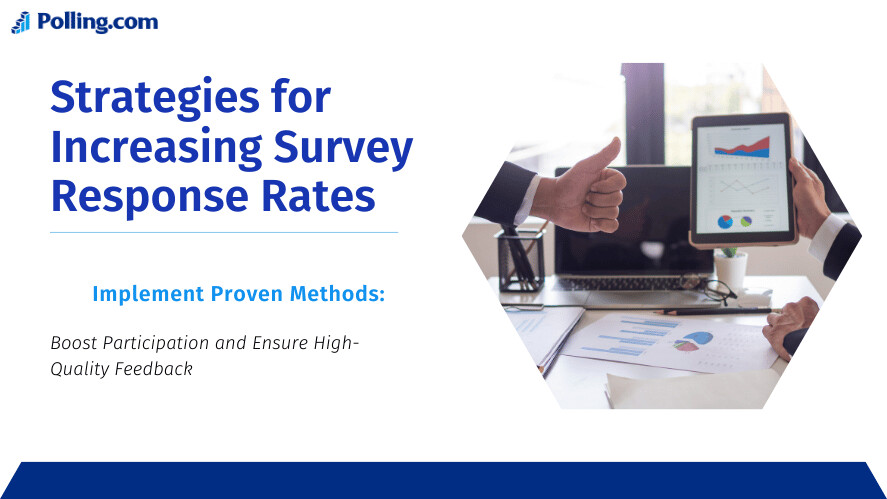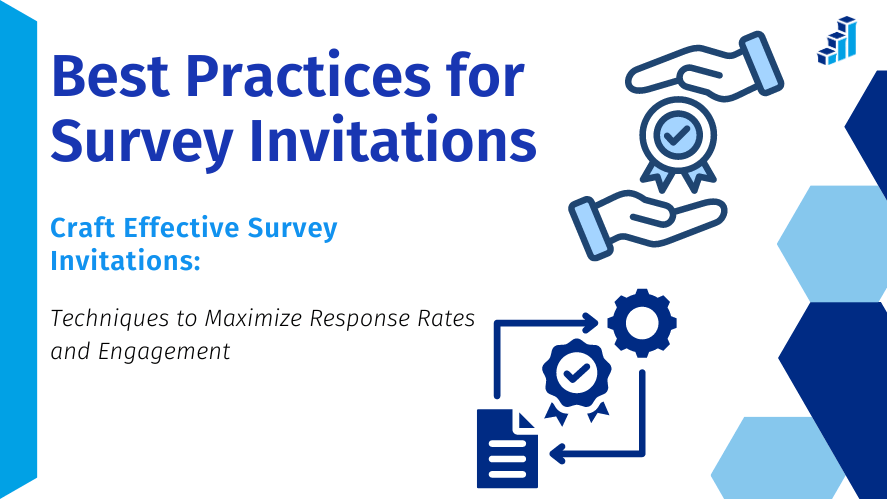
Survey Response Rate Optimization: Best Practices and Strategies
Survey response rates are a critical metric for researchers, marketers, and businesses alike. They indicate the percentage of people who completed a survey out of the total number of people who were invited to participate.
High response rates are essential for ensuring data quality and representativeness, which in turn impacts the reliability of the survey findings.
However, achieving a high survey response rate can be challenging. Factors such as survey design, timing, and the relevance of the survey topic can significantly influence the willingness of respondents to participate.
This article aims to provide practical strategies and tips to optimize survey response rates, helping you gather more accurate and comprehensive data.
Understanding Survey Response Rates

Response Rate Definition
Survey response rate is defined as the proportion of individuals who respond to a survey out of the total number of individuals invited to participate. It is usually expressed as a percentage.
For example, if 100 people were invited to take a survey and 50 responded, the response rate would be 50%.
Why Response Rates Matter
High response rates are crucial for several reasons:
- Data Quality: A higher response rate reduces the margin of error and increases the reliability of the survey results.
- Representativeness: Surveys with high response rates are more likely to accurately reflect the views and characteristics of the entire target population.
- Credibility: Research findings from surveys with high response rates are generally considered more credible and trustworthy.
Survey Response Rate Benchmarks
Response rates can vary significantly across different industries and types of surveys. Some common benchmarks are:
- Customer Satisfaction Surveys: Typically, response rates range from 5% to 30%.
- Employee Engagement Surveys: These usually achieve higher response rates, often between 30% and 60%.
- Academic Research Surveys: Response rates can vary widely, but a typical range is 10% to 20%.
Understanding these benchmarks can help set realistic goals for your survey response rates.
Factors Affecting Survey Response Rates

Survey Design
- Clear, Concise Questions: Avoid complex or ambiguous questions. Use simple language and ensure that each question is straightforward.
- Optimal Survey Length: Surveys that are too long can lead to respondent fatigue and higher dropout rates. Aim for a survey length that takes no more than 10-15 minutes to complete.
Target Audience
- Demographics: Tailor your survey to the demographic characteristics of your target audience. This encompasses taking into account elements like age, gender, and cultural background.
- Relevance: Ensure that the survey topic is relevant to the audience. If respondents see value in the survey, they are more likely to participate.
Timing and Frequency
- Best Times to Send Surveys: Research suggests that the best times to send surveys are typically during weekdays, avoiding Mondays and Fridays. Late mornings and early afternoons are often optimal.
- Avoiding Survey Fatigue: Sending too many surveys to the same audience can lead to survey fatigue, where respondents become less willing to participate. Space out survey invitations to avoid this issue.
Strategies for Increasing Survey Response Rates

Personalization
- Personalized Invitations: Address respondents by their name and personalize the content of the invitation to make it more engaging.
- Tailoring Content: Customize the survey content based on the respondent’s previous interactions or known preferences.
Incentives
- Types of Incentives: Offer incentives such as gift cards, discounts, or entries into a prize draw. Non-monetary incentives like exclusive content or early access to results can also be effective.
- Ethical Considerations: Ensure that the incentives are ethical and do not unduly influence the respondent’s answers.
Survey Distribution Channels
- Email Surveys: Email remains a popular and effective distribution channel. Ensure that your emails are well-crafted and not marked as spam.
- Social Media: Leverage social media platforms to reach a broader audience. Use targeted ads and posts to promote the survey.
- Mobile Surveys: Optimize your surveys for mobile devices to reach respondents who are more likely to complete surveys on their phones.
Follow-ups
- Reminder Emails: Send reminder emails to non-respondents to encourage participation. Be polite and concise in your reminders.
- Effective Timing: Space out follow-up reminders appropriately. A common practice is to send a reminder a week after the initial invitation and a final reminder a week later.
Best Practices for Survey Invitations

Compelling Subject Lines
- Create subject lines that are straightforward, succinct, and engaging. Avoid clickbait and ensure the subject line accurately reflects the survey content.
Effective Invitation Messages
- Write invitation messages that are engaging and to the point. Explain the purpose of the survey, the estimated time to complete it, and any incentives offered.
Clear Call-to-Action
- Include a clear and prominent call-to-action (CTA) in your survey invitation. Make it easy for respondents to access the survey link and start the survey immediately.
Enhancing User Experience

Mobile-Friendly Design
- Ensure that your survey is mobile-friendly. A significant portion of respondents may complete the survey on their mobile devices, so the survey should be easy to navigate on smaller screens.
Anonymity and Confidentiality
- Assure respondents that their responses will remain anonymous and confidential. This can increase their willingness to participate and provide honest answers.
Simplifying the Survey Process
- Simplify the survey completion process by minimizing the number of mandatory fields and avoiding complex question formats. Use progress indicators to show respondents how much of the survey they have completed.
Analyzing and Adjusting Strategies

Monitoring Response Rates
- Continuously monitor your survey response rates. Use analytics tools to track the performance of different surveys and identify patterns.
A/B Testing
- Use A/B testing to experiment with different survey invitation messages, subject lines, and incentives. This can help identify the most effective strategies for increasing response rates.
Adjusting Tactics
- Based on the feedback and results, adjust your survey strategies. Be flexible and open to trying new approaches to improve response rates.
Conclusion
Optimizing survey response rates is crucial for obtaining high-quality, representative data. By understanding the factors that influence response rates and implementing effective strategies, you can significantly improve the participation rate for your surveys.
Remember to personalize invitations, offer appropriate incentives, and continuously analyze and adjust your tactics based on feedback and results. By applying these best practices, you can enhance the overall effectiveness of your surveys and gather valuable insights for your research or business.
